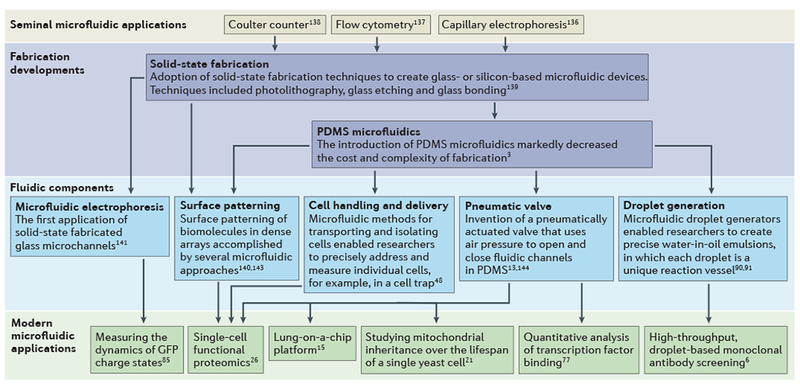Figure 1 |. A flow diagram highlighting crucial developments in microfluidics, from fabrication approaches and functional developments in the evolution of the technology platform to some of the applications discussed in this Review.

As early as the 1960s, seminal microfluidic technologies were increasing the speed and resolution of bioanalysis for a small number of powerful analytical tools136–138. Crucial fabrication developments, which began in 1990, allowed researchers to transition from using pulled glass capillaries to microfabricated glass or polymer microchannels3,139. Microfluidic tools have precisely defined features and contain highly complex channel networks and fluidic components that can execute specific functions13,48,91,140–144. In the past decade, the increasing availability of fluidic components and number of experienced microfluidic researchers have opened the door to new biological applications; these include new single-cell measurements5,12,21, high-throughput monoclonal antibody screening6, analysis of dynamic phenomena21,77,85 and organ-on-a-chip platforms15. PDMS, polydimethylsiloxane.
